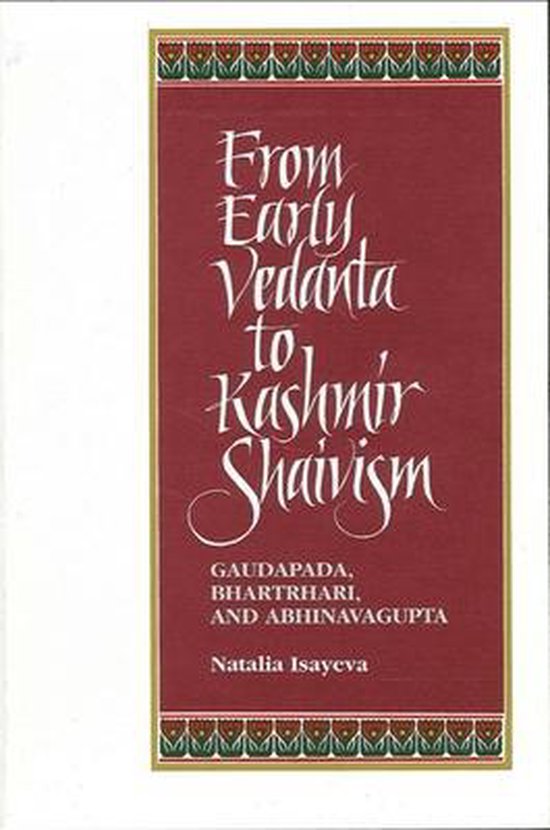
From Early Vedanta to Kashmir Shaivism
This book clarifies the relationship between God and the creation for Gaudapada, Bhartrhari, and Shankara, and by doing so, demonstrates a major continuity of thought from Gaudapada through Bhartrhari to Abhinavagupta and Kashmir Shaivism.
This book deals with one of the most interesting periods in the development of Indian religious and philosophical traditions. Starting with the teaching of the proto-vedantist philosopher Gaudapada, and then analyzing the ideas of his famous contemporary, the grammarian Bhartrhari, the author suggests an entirely new approach to the whole history of vedanta.
Gaudapada and Bhartrhari are presented as founders of an independent trend within Indian orthodox philosophy, a trend that culminates later in the theistic tenets of Kashmir Shaivism. Isayeva shows that, in contrast to SAankara, early vedantist philosophers regarded the higher Brahman as a kind of continuous reverberation of a peculiar phonic energy that was ever producing the same constantly renewable structures and patterns of the universe. This idea found its continuation in the metaphysical and aesthetical concepts of Abhinavagupta, where the ultimate ontological reality is manifested through the rhythmical outbursts of God's creative power.
This book deals with one of the most interesting periods in the development of Indian religious and philosophical traditions. Starting with the teaching of the proto-vedantist philosopher Gaudapada, and then analyzing the ideas of his famous contemporary, the grammarian Bhartrhari, the author suggests an entirely new approach to the whole history of vedanta.
Gaudapada and Bhartrhari are presented as founders of an independent trend within Indian orthodox philosophy, a trend that culminates later in the theistic tenets of Kashmir Shaivism. Isayeva shows that, in contrast to SAankara, early vedantist philosophers regarded the higher Brahman as a kind of continuous reverberation of a peculiar phonic energy that was ever producing the same constantly renewable structures and patterns of the universe. This idea found its continuation in the metaphysical and aesthetical concepts of Abhinavagupta, where the ultimate ontological reality is manifested through the rhythmical outbursts of God's creative power.
| Auteur | | Natalia Isayeva |
| Taal | | Engels |
| Type | | Paperback |
| Categorie | | Religie, Spiritualiteit & Filosofie |